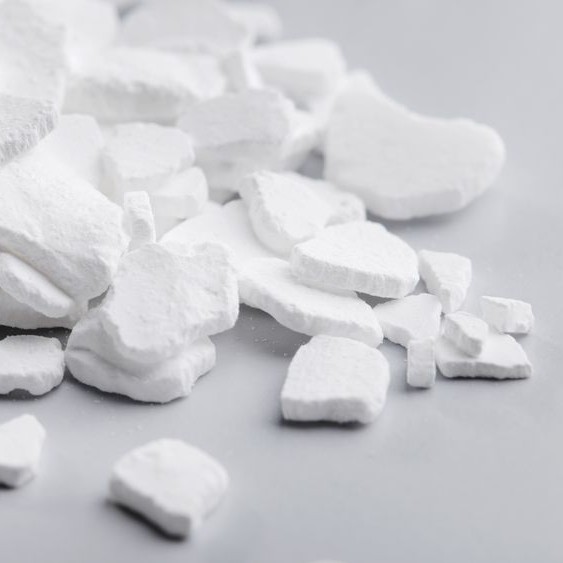
Calcium Chloride
What is Calcium Chloride?
Calcium chloride is used in the baking industry for many reasons, from an anti-caking agent to salt replacement. It is an inorganic compound with the formula CaCl2. It is solid at room temperature but highly soluble in water. Calcium chloride often exists in hydrated form. Its anhydrous salt is hygroscopic.
Origin
Calcium chloride can be directly obtained from limestone, but large amounts are produced as a by-product of the Solvay process.1
Nutrition
Calcium chloride is a source of calcium. Calcium has many potential benefits in health promotion and disease prevention and treatment. The daily requirement of calcium for both male and female adults is 1000 mg per day, as recommended by the Food and Nutrition Board at the Institute of Medicine of the National Academies.2
Function3
- Anticaking agent
- Antimicrobial agent
- Curing or pickling agent
- Flavor enhancer
- Humectant
- Nutrient supplement
- pH control agent
- Processing aid
- Stabilizer and thickener
- Surface-active agent
- Synergist
- Texturizer
Commercial Production
Calcium chloride may be commercially obtained as a byproduct in the ammonia-soda (Solvay) process and as a joint product from natural salt brines, or it may be prepared by substitution reactions with other calcium and chloride salts.3
Application
Calcium chloride can be used to replace salt in the production of reduced-sodium bread. Calcium salt can be replaced up to 32% of sodium for brown bread without adversely affecting palatability or product quality.4
Calcium chloride has also been used in an angle cake mix (U.S. Pat. No. 3,653,917) to increase cake tolerance.5 It has also been used as leavening acids for batter and dough compositions (US5882712A).6
FDA Regulation
Calcium chloride is GRAS status as regulated by FDA in Code of Federal Regulations 21CFR184.1193.3 The maximum levels for calcium chloride addition are also regulated in different kinds of food. They are:
- 0.3% for baked goods and dairy product analogs
- 0.22% for nonalcoholic beverages and beverage bases
- 0.2% for cheese and processed fruit and fruit juices
- 0.32% for coffee and tea
- 0.4% for condiments and relishes
- 0.2% for gravies and sauces
- 0.1% for commercial jams and jellies
- 0.25% for meat products
- 2.0% for plant protein products
- 0.4% for processed vegetables and vegetable juices
- 0.05% for all other food categories
References
- “PREPARATION OF SODIUM CARBONATE BY SOLVAY PROCESS.” Scienceeasylearning. 25 July 2016. https://scienceeasylearning.wordpress.com/2015/05/25/preparation-of-sodium-carbonate-by-solvay-process/. Accessed 24 Apr. 2017.
- “Office of Dietary Supplements – Dietary Supplement Fact Sheet: Calcium.” National Institutes of Health. U.S. Department of Health and Human Services, 17 Nov. 2016. https://ods.od.nih.gov/factsheets/Calcium-HealthProfessional/. Accessed 17 Apr. 2017.
- “CFR – Code of Federal Regulations Title 21CFR184.1193.” US Food & Drug Administrataion. 01 Apr. 2016. www.accessdata.fda.gov/scripts/cdrh/cfdocs/cfCFR/CFRSearch.cfm?fr=184.1193. Accessed 20 Apr.2017.
- Charlton, Karen E., Elizabeth Macgregor, Nonnie H. Vorster, Naomi S. Levitt, and Krisela Steyn. “Partial Replacement of NaCl Can Be Achieved with Potassium, Magnesium and Calcium Salts in Brown Bread.” International Journal of Food Sciences and Nutrition 58.7 (2007): 508-21.
- “Patent US3653917 – Angel Food Cake Mixes and Their Production.” Google Patents. 4 Apr. 1972. www.google.com/patents/US3653917. Accessed 20 Apr.2017.
- “Patent US5882712 – Use of Calcium Chloride and Magnesium Chloride as Leavening Acids for Batter and Dough Compositions.” Google Patents. 16 Mar. 1999. www.google.com/patents/US5882712. Accessed 20 Apr. 2017.

